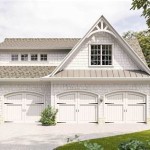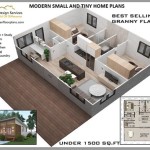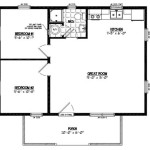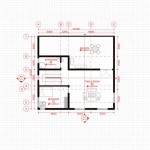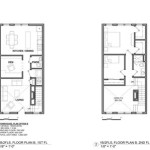What Is a 2D House Plan?
A 2D house plan, also commonly referred to as a floor plan, is a scaled drawing that represents the layout of a house from a bird's-eye view. It provides a horizontal slice through the structure, typically at about waist height, showing the arrangement of walls, doors, windows, and other fixed features. This type of plan is essential for visualizing the overall spatial organization of a house and is a fundamental document in the design and construction process.
Key Elements of a 2D House Plan
A well-drafted 2D house plan incorporates several key elements that provide a comprehensive understanding of the proposed structure. Walls are represented by lines, with thicker lines often indicating exterior walls. Doors are typically depicted as open arcs showing the direction of swing. Windows are represented by combinations of lines and breaks indicating their size and placement. Other features like stairs, fireplaces, and built-in fixtures are also shown using standardized symbols. Dimensions are crucial and are usually included to specify the length and width of rooms and the distances between various elements. These dimensions ensure accurate construction and allow for precise calculations of materials and costs.
Types of 2D House Plans
Different types of 2D house plans cater to various needs throughout the design and construction phases. A basic floor plan shows the layout of each floor of the house, including room sizes and locations of doors and windows. A detailed floor plan delves further, including details like electrical outlets, plumbing fixtures, and appliance placement. A foundation plan focuses specifically on the layout of the foundation walls and footings. A roof plan illustrates the roof's structure, including the type of roof, pitch, and placement of vents and chimneys. Finally, an elevation plan depicts the exterior walls of the house from different viewpoints, showing the heights of windows, doors, and rooflines.
Benefits of Using 2D House Plans
Utilizing 2D house plans offers several advantages in the building process. They facilitate clear communication between architects, builders, and homeowners, ensuring everyone is on the same page regarding the design. They enable accurate cost estimations by providing detailed information about materials and quantities required. They aid in identifying potential design flaws or conflicts before construction begins, saving time and money on revisions. They serve as a valuable guide during construction, ensuring the building adheres to the approved design. Lastly, they provide a permanent record of the house's layout, which can be useful for future renovations or modifications.
Software for Creating 2D House Plans
Various software applications are available for creating professional-quality 2D house plans. Computer-aided design (CAD) software provides powerful tools for drawing accurate and detailed plans, including features for automatic dimensioning and generating different views. Architectural design software offers specialized features for designing houses, including libraries of pre-drawn symbols and templates for various building components. Several online tools and apps also allow users to create basic 2D floor plans, often with drag-and-drop interfaces and simplified features. The choice of software depends on the complexity of the project and the user's technical expertise.
Interpreting a 2D House Plan
Understanding how to interpret a 2D house plan is crucial for effectively utilizing it. The plan should be read in conjunction with any accompanying documentation, such as specifications and schedules. Pay close attention to the scale of the drawing, which indicates the relationship between the dimensions on the plan and the actual dimensions of the house. Familiarize yourself with the symbols used to represent different features, often explained in a legend or key. Carefully review the dimensions to understand the size and proportions of rooms and other spaces. Analyze the placement of doors, windows, and fixtures to visualize the flow and functionality of the house.
The Role of 2D House Plans in the Construction Process
2D house plans play a vital role throughout the different stages of the construction process. During the design phase, they serve as the primary means of communicating the design intent and allow for iterative refinements. During the permitting process, they are submitted to local authorities for approval, ensuring the proposed construction meets building codes and regulations. During the construction phase, they guide the builders in accurately constructing the foundation, walls, roof, and other structural elements. Throughout the project, they serve as a reference document for resolving any design or construction-related issues. Even after completion, they remain a valuable record of the as-built condition of the house.
Limitations of 2D House Plans
While invaluable, 2D house plans do have limitations. Visualizing the three-dimensional aspects of a house can be challenging with a 2D representation. They might not effectively convey the spatial relationships between different levels of a multi-story building. Complex architectural features or intricate details may be difficult to represent accurately in a 2D format. For a more immersive and realistic representation, 3D models and virtual tours can be used to supplement 2D plans.

Beautiful 2d Floor Plan Ideas Engineering Discoveries Home Map Design House Building Plans Designs

2d Floor Plans

Beautiful 2d Floor Plan Ideas Engineering Discoveries Building House Plans Designs Small Simple

30 Fantastic 2d Floor Plan Ideas Engineering Discoveries Simple House Plans 30x50

2d Plan Of The Single Family House Scientific Diagram
28 Incredible 2d House Plans For Various Locations Engineering Discoveries

Beautiful 2d Floor Plan Ideas To See More Read It Building Plans House Layout Bungalow

2d Floor Plan Archives Page 2 Of 6 Dk Home Designx

Draw 2d Floor Plans In Minutes Not Hours Cedreo

Drawings Details Of 2d House Plan Autocad File Cadbull
Related Posts


